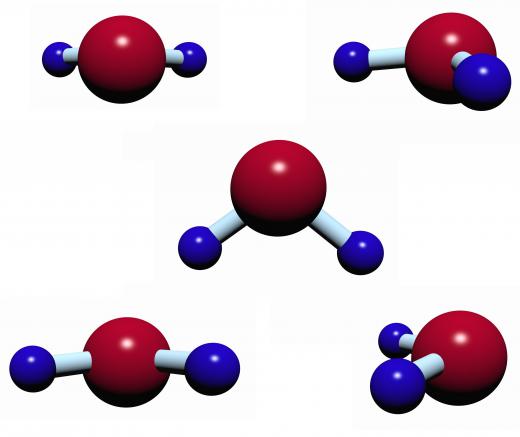At AllTheScience, we're committed to delivering accurate, trustworthy information. Our expert-authored content is rigorously fact-checked and sourced from credible authorities. Discover how we uphold the highest standards in providing you with reliable knowledge.
In Meteorology, What Is Saturation?
In meteorology, the term saturation refers to a condition where the air is holding the maximum amount of moisture possible in the form of water vapor. This corresponds to a relative humidity level of 100%. The amount of moisture in an air mass at saturation can vary according to a number of factors, primarily temperature and pressure, as warm air can hold more moisture than cooler air. Dew and other forms of precipitation are the result of saturated air.
The condition or state of saturation has variables which define the amount of water vapor present in a given body of air. The ability of air to hold water vapor varies, especially with temperature, but it is also affected by atmospheric pressure. While increasing temperature increases the amount of moisture air can hold, a rise in pressure lowers this amount.

Saturation, therefore, refers to the state at which any body of air has reached its maximum capacity for holding dissolved moisture as water vapor. The saturation point is also known by a much more familiar term, the dew point, which refers to the temperature at which the air has become saturated. When air is at a condition of saturation and the temperature falls or the atmospheric pressure rises, the air will be unable to hold the dissolved water vapor in suspension and some will be forced out as liquid water. This process is familiar to almost everyone as the formation of dew. As water molecules are forced out of suspension, they adhere to surfaces and molecular attraction causes them to collect together, forming the water droplets we know as dew.

Relative humidity is a term often used by meteorologists when discussing weather conditions, and it is directly connected to saturation. A relative humidity of 100% is considered to be a state of saturation, and air with a relative humidity of 100% is said to be saturated. Meteorologists often include the current relative humidity and the dew point to convey how humid the air is.
Precipitation in the form of rain, snow, hail are also products of saturation. As a warm body of air that contains moisture rises, it cools off, and its ability to hold moisture is reduced. As the temperature falls, the air becomes more saturated due to the correlation between temperature and moisture holding capacity. Eventually, the air cools to the point where it becomes saturated, and water is precipitated out from the air, becoming rain, snow, or some other form depending on the temperature.
AS FEATURED ON:
AS FEATURED ON:












Discuss this Article
Post your comments